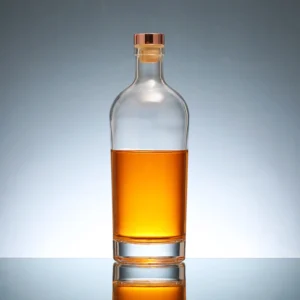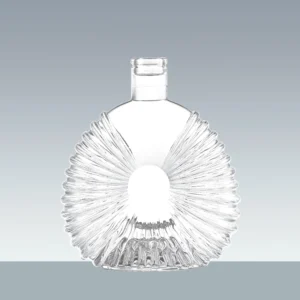Whisky bottles sizes in the world! It’s a fascinating topic, indeed. Whiskey bottles have several…
What You Need To Know About Liquor Bottle-The Blueprint Guide
Liquor is an alcoholic universal popular drinks for one thousand years, it is associated with human’s daily life and in the long five thousand years civilization of the world, wine brewing a long stream, but the origin of the liquor whether in when and where is an interesting and complicated problem, but one thing indisputable fact is for sure, liquor before human beings exist objectively. With the advent of liquor, glass wine bottles began to develop.
The liquor is classified according to the brewing method, mainly divided into natural fermentation of the wine, after fermentation distillation of the wine, and half fermentation distillation of the preparation of wine.
- Fermented wine
Fermented wine is mainly refers to the liquor-making raw materials is microbial saccharifying fermentation or directly through yeast fermentation, using squeeze filtration or with their juice after fermentation for shows the natural fermentation of wine alcohol content is relatively low, generally around 3% to 18%, which in addition to alcohol and there are many vitamins minerals, organic acid nutrients such as amino acid peptide with beer and wine fermented wines among them the most famous.
- Distilled Liquors
Distilled spirits refers to the raw material was brewing microorganisms, after saccharification or directly by yeast fermentation of fermentation liquid with special distillation apparatus distillation again get wine, and after special storage modulation after blending drinking wine, this wine alcohol for relative fermented alcohol content is higher, up to more than 90% (column: the former Soviet union vodka, gin in the United States, such as the strong wine many are several distillation), there are also some low-alcohol wine out of alcohol in the 28% to 38% of wine and a small amount of easy and ferment aldehyde acid ester is the fragrance of different combinations Note: this wine contains virtually no essential nutrients.
Distilled spirits the world is best known for: Chinese liquor,brandy,whisky,vodka,gin,rum,milk,liquor(distilled type) and other distilled spirits.
- Assembled alcoholic drinks
Assembled alcoholic drinks are to point to with ferment liquor and distill liquor or edible alcohol is the most base liquor, wait for the liquor liquor that the method such as water of kind of beverage such as water of plant juice or ice water is mixed directly to wait for the liquor liquor that steeps distillation to wait for way to get liquor liquor liquor of this kind of liquor is higher also, be in commonly 18% to 38% or so.
Assembled alcoholic drinks we common have: medicated wine health wine cocktail and so on.
Wine bottle is a container for holding wine
- Historically
Wine bottles were mostly presented to the world in simple patterns of “soy sauce bottle” glass material with less information and less decoration. For thousands of years, the material of wine bottles has changed, mainly according to the production process and technology.
- Material evolution
The wine bottle material is more and more diversified, has the gold plating, the copper plating, the iron, the tin, the stainless steel, the pottery, the purple sand, the porcelain, the wood, the bamboo, the glass, the ox horn, the bakelite and so on each kind of material bottle material shows the respective characteristic and the style some is gorgeous and precious, some is solemn and generous, still has the light body. Common wine bottles are ceramic bottles, glass bottles, plastic bottles, etc., of which ceramic bottles are particularly popular.
- market demands
The requirement for the wine bottle is not in the long-term storage can not introduce other odor, can not introduce other unhealthy ingredients, as far as possible to reduce the loss of liquor, a small amount of wine with exhaust requirements.
Liquor is a solvent with a strong reaction ability to metals such as lead and aluminum, so it should be avoided to introduce these substances, using lead-free glass and lead-free ceramic folding editing process.
- Craftsmanship
The production process of wine bottles is many, the initial molding is generally fired (such as ceramic bottles) blowing (such as glass bottles) and mechanisms (such as some metal bottles and wood bottles); Decoration process has glaze method, color painting method, carving method, gilt method, gilt method, copper-imitation method, and so on.
- Bottle collection
For many collectors, on the one hand, collecting is a way of investment, on the other hand, it also brings to collectors the enjoyment of the culture and connotation of the bottle itself may not be valuable, but if given a certain historical or cultural significance, it will enhance its collection value.
Bottle collection, from the variety, there is a single bottle to bottle set bottle series bottles (more than three); Look from material qualitative, give priority to with pottery and porcelain purple arenaceous, still have the melon of the bamboo of metallic glass wood; From the capacity, the large can hold 5000 milliliters small can only hold 50 milliliters; From the morphology, there are figures, animals, plants, vehicles, military weapons, etc.
- Collect tips
The collection of craft bottles needs to pay attention to the following aspects:
- Whether the craft bottle is complete:
Complete glass craft bottle bottle includes bottle body cap bottle label, some winery USES one-time anticounterfeit cap, after the cap is opened because of its destruction and throw away, the collector should close the cap and joint after opening the cap.
- The product phase of glass craft wine bottle:
If some ceramic craft wine bottle appears small flaw because of slight collision, will affect its value seriously so want to ensure the product phase of craft wine bottle as far as possible, handle gently.
- The identity of glass craft bottle:
Distinction whether a kind of container is craft bottle, its only mark should be wine mark, because this collector must not damage the wine mark that sticks on bottle body, after all it is the id card that proves this container is craft bottle.
This Post Has 2 Comments
Comments are closed.




My brother recommended I would possibly like this web site. He was totally right. This publish truly made my day. You can not imagine just how a lot time I had spent for this information! Thank you!
Mmany thanks dear.